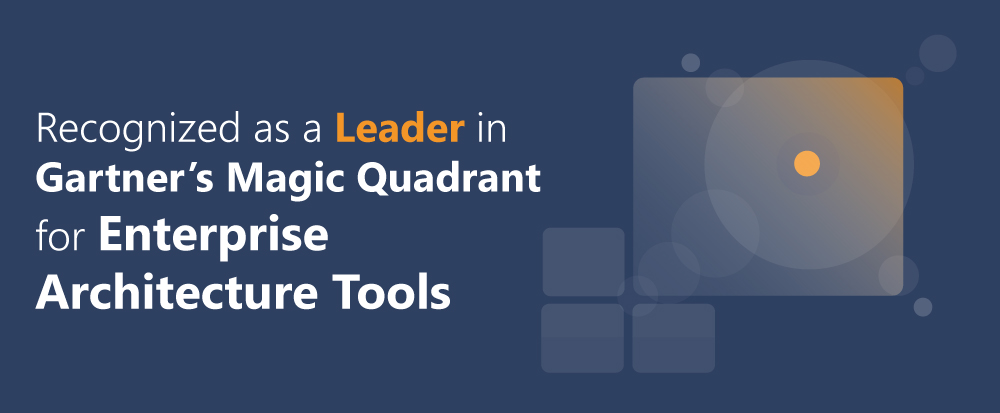Why do I need Enterprise Architecture?
Technology, markets, and regulations are constantly changing and evolving. New technology introduces new business models, adaptive markets increase competition and expectations, and new regulations are coming in quick and fast. This ongoing change causes business eco-systems to become increasingly complex.
Enterprise Architecture can help manage this complexity and allow organizations to remain agile and stay ahead of the curve.
Let’s take a step back. All businesses within all industries, are formed of multiple parts including processes, products, data, people, and technology. These parts need to work together like cogs in a machine to create value. How do we understand how these parts fit together? That is the purpose of Enterprise Architecture (EA).
EA helps to identify these primary components and the relationship between them. Often spoken of as the “blueprint” of a company, EA helps to unify and coordinate departmental processes across your business. It also provides access to understand business capabilities and highlight how to improve the ways your business delivers value.
Four Domains of Enterprise Architecture
Within every organization there will be different stakeholders from different departments wanting to understand different levels of detail of how the business is operating. Sound familiar?
To be able to gather this information quickly and efficiently, Enterprise Architecture is often broken down into four primary domains: Business Architecture, Application Architecture, Data Architecture and Technology Architecture.
For businesses to succeed they need to be aligned and have a comprehensive view of all these domains.
Business Architecture:
Business Architecture provides a structured, model-driven approach to building and managing an organization.
It provides a collective understanding of how an organization operates, including:
- Key business processes
- The business capabilities underpinning these processes
- The alignment of business functions such as roles, responsibilities, metrics, products, and projects etc.
Business Architects provide visibility of business drivers, business strategy, goals, and objectives that the organization needs to achieve. As well as helping define business goals, they help organizations to realize these outcomes.
Application Architecture:
All business use at least some form of software. Usually much more than they aware of. According to a study by Symantec, on average enterprises have up to 1000 cloud applications, although their CIOs think it’s just 30-40.
With more applications being introduced and adapted, the maintenance of application portfolios (within the context of the value and functionality that they provide to the business) can quickly become a challenge.
Application architecture helps to define software solutions and provides an organization-wide catalog of IT applications, including what each application does to communicate, transform, and store information.
By defining your organization’s software solutions, architecture teams can provide details and clarity on each application.
Successful application transformation projects will manage costs and track how improving or developing new applications and processes can increase customer and stakeholder satisfaction.
To find out more about Enterprise Architecture and Application Transformation please click here.
Data Architecture:
On average, most companies today are working with a petabyte of data (also known as a 1,000 Terabytes or 1,000,000 Gigabytes). To put this into context, 1 Petabyte could hold 500 billion pages of standard printed paper.
When stakeholders need a full picture of where data is stored, the protocols governing how the data is moved, at time critical moments, Data Architects help to make this possible.
Data Architecture helps to identify:
- The source of the data (such as the applications that serve as the master data and ownership of these applications)
- How the data is used within an organization to support business functions
- Quality of data (descriptions of both data in-storage and data in-motion)
- Ownership (consisting of details of the business functions and processes that utilize data)
- Data governance and security
Technology Architecture:
Many organizations have some form of physical hardware to run and store their data and applications, such as devices, and hardware resources. This is where Technology Architecture comes into play.
Technology Architecture defines the underlying infrastructure needed to run business applications including the documentation of technology platforms, as well as details of the logical, physical and/or virtual infrastructure that supports IT and computer systems.
Technology Architects and their teams manage the complexity of maintaining multiple hardware devices which are often in multiple locations – especially with the increase of remote working.
Aligning IT and the Wider Business
For businesses to succeed they need architects to “make the invisible, visible”, providing a comprehensive view of all these domains.
Enterprise Architecture is not just an IT concern it is at the core of many business priorities.
Strong architecture teams enable IT and the wider business to unify and focus on achieving company-wide goals efficiently. Successful Enterprise Architecture helps organizations become more cost-effective, more strategic, and more responsive to business needs.
Discover how Enterprise Architects are using ABACUS to reach their business goals:
- Tackling Cybersecurity and Risk
- Managing Technical Debt Using Enterprise Architecture
- Using Enterprise Architecture for What-If Analysis and Business Change
- Understanding your Application Landscape
- Constructing the Enterprise Digital Twin
Want to find out more on Enterprise Architecture and implementing ABACUS within your organization? Contact our team for a free demo of ABACUS:



